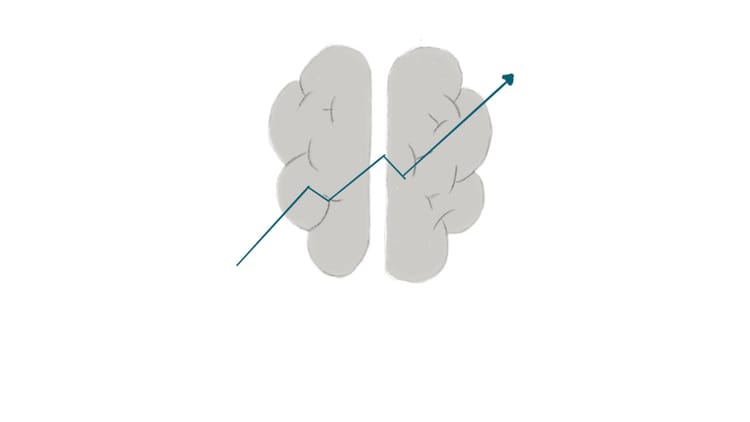4. The One Learning Style That Actually Matters

Ninety-six percent of teachers—and most course creators—believe in a theory that simply isn't true.
It's called the Learning Styles Theory.
You've probably heard it: some people are visual learners, others auditory, and others kinesthetic. The idea sounds intuitive. It feels respectful to individual differences. And most of us have believed it at some point.
But here's the problem: it doesn't work. And worse—it can actually make teaching and learning less effective.
Why Learning Styles Are a Myth
When researchers started to test the learning-styles idea, they ran into a wall. They divided students into groups based on their preferred style—for example, visual or auditory—and then taught them in that "matching" way.
The result? No improvement.
Whether you matched or mismatched the style made no measurable difference to learning outcomes.
In other words: The idea that "visual learners" learn best through pictures is a myth. It's not just unproven—it's disproven.
Yet despite that, nearly every teacher training, online course, and learning consultant still refers to it. Why? Because it feels right. It sounds caring and individualized. But it distracts us from what actually matters.
The Real Problem: Misplaced Energy
When you believe in something, you invest in it. You build your lessons, your materials, even your identity as a teacher around it.
And when that "something" turns out to be wrong, you've spent all that energy—all that time—in the wrong place.
I've talked to online course creators who spend hours reworking slides, rewriting scripts, and designing multiple versions of the same content—just to cover every "learning style."
That's a tragic waste of energy.
Because the problem isn't that people have different learning styles. The problem is that we misunderstand how learning actually works.
The Only "Learning Style" That Matters: Adaptation
If you want to design powerful lessons or courses, forget learning styles. Focus instead on the one factor that truly changes how people learn:
Their level of expertise.
This principle is called the Expertise Reversal Effect .
Here's what it means in practice:
-
What helps beginners can actually hurt advanced learners.
-
And what challenges experts can completely overwhelm novices.
In the early stages, learners need worked examples—step-by-step guidance that shows exactly how something is done. This reduces cognitive load and helps them understand the structure of the problem.
But as they progress, those same examples start to get in the way. They need the guidance to fade—gradually—so they can start solving on their own.
If the instruction never adapts, advanced learners get bored and disengage. If it adapts too late, beginners get lost.
That's why the best learning systems—from Cognitive Tutor software to great human teachers—constantly adjust the level of support based on what the learner already understands.
That's the real learning style: Not visual, auditory, or kinesthetic. But adaptive.
Action Plan for Knowledge Architects
Your energy shouldn't go toward flattering a student's mythical "style." It should go toward creating optimal conditions for learning and skill growth.
-
Stop Designing for "Styles."
Design for progression. Start with high structure, and carefully fade it as competence grows.
-
Build Adaptive Moments.
Ask questions that reveal where the learner actually is on the path to expertise. Adjust your guidance in response to their actual competence.
-
Focus on Cognitive Load.
Simplify tasks for beginners to prevent overwhelm. Only increase challenge when fluency develops, forcing them to retrieve knowledge and build strong long-term memory.
-
Design for Feedback.
Learning doesn't depend on how information enters the brain—but on how effectively the learner can process and apply it. Provide clear, immediate feedback on their application of knowledge.
Final Thought
If 96 percent of teachers still believe in learning styles, that tells us less about the theory—and more about how we learn as educators.
We love neat models that sound human.
But teaching isn't about flattering learning preferences. It's about creating conditions where understanding can grow.
So next time you plan a lesson, forget "visual vs. auditory."
Ask instead:
"Where is my learner on the path from example to independence?"
That's the only learning style that truly matters.
Sources
- ****Ericsson & Pool (Buch):****Peak: Secrets from the New Science of Expertise
- ****Peps Mccrea (Bücher):****Motivated Teaching / Memorable Teaching
- ****Sherrington & Caviglioli (Buch):****Teaching Walkthrus
- ****De Groot (Forschung):****Thought and Choice in Chess (1946/1978)
- ****Chase & Simon (Forschung):****Perception in Chess (1973)
- Education Bookcast Folge 79:What learning is
- Education Bookcast Folge 81a:There are no learning styles
- Education Bookcast Folge 81b:Except this one
- Education Bookcast Folge 82:Memorable teaching
- Education Bookcast Folge 86:Learning is information compression
- Education Bookcast Folge 133:Patterns are fast, rules are slow
- Education Bookcast Folge 149:How popular musicians learn
Related Articles
- 2. Die Wissenschaft des Lehrens: Wie das Gehirn neue Fähigkeiten schmiedet
- 3. Der Wissensarchitekt: 6 Prinzipien für Kurse, die wirklich funktionieren
- 1. Der Genie-Mythos: Was Expertise wirklich ist (und wie man sie aufbaut)
- 2. Die verborgene Macht des Nervensystems: Warum wir im Drama gefangen bleiben